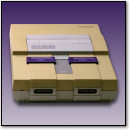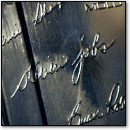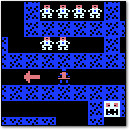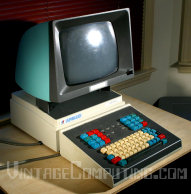 A Proprietary Mystery
A Proprietary Mystery
All I knew about this box before I bought it was that it was an airline reservation terminal at some point, and that it cost $2. So I went for it, not only because it looks cool, but also hoping that it might be a standard RS-232 serial terminal. Well, so far, no such luck. This thing is pretty weird. I’m not sure what system it was designed to hook up to, but it appears non-standard. It has four connectors in the back: a DB-9, a DB-25, a DB-15, and a female BNC jack (see picture below), labeled J1 through J4 on the chassis. The DB-25 is used for the keyboard. When I initially power it on, all the red LEDs on the keyboard light up and the main unit emits a steady beep that never stops. I guess it’s not happy that it’s lost its master — whatever mainframe that drove it back in the day (the other very obvious possibility is that it’s broken in some way). I can’t get anything on the built-in green CRT, not even a cursor of some type. I hooked the DB-9 port up to a modem to see if it might come alive with a serial input, but no luck. Same behavior.
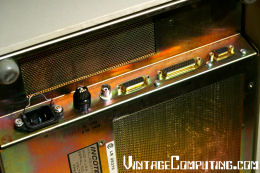 Upon cracking it open, I found some curious stuff. The thing that surprised me most at first glace was that there is no logic on the main board inside the base unit at all– only power supply stuff. And of course, all the video circuitry is in the top “monitor” portion of the box. Also, the the DB-9 and the DB-15 connectors are both wire-wrapped (Exactly how old is this thing?!) to the DB-25 connector, and the DB-25 connector has a few pins connected to wires going to both the monitor section and the power supply. Much to my surprise, the DB-9 doesn’t have the usual pins for RS-232 connected to anything (2, 3, and 5, if I recall correctly). In fact, only pins 1 and 6 are wrapped. All the posts on the back of the DB-15 are wrapped and connected to the DB-25. As a result, I would have to guess that this is the main data connector. I also noticed that the BNC jack goes directly to the monitor section; I suspect it’s a direct composite video input, which is not too uncommon on terminals at the time. Maybe I can use it as a green screen monitor, if nothing else…not that I need one.
Upon cracking it open, I found some curious stuff. The thing that surprised me most at first glace was that there is no logic on the main board inside the base unit at all– only power supply stuff. And of course, all the video circuitry is in the top “monitor” portion of the box. Also, the the DB-9 and the DB-15 connectors are both wire-wrapped (Exactly how old is this thing?!) to the DB-25 connector, and the DB-25 connector has a few pins connected to wires going to both the monitor section and the power supply. Much to my surprise, the DB-9 doesn’t have the usual pins for RS-232 connected to anything (2, 3, and 5, if I recall correctly). In fact, only pins 1 and 6 are wrapped. All the posts on the back of the DB-15 are wrapped and connected to the DB-25. As a result, I would have to guess that this is the main data connector. I also noticed that the BNC jack goes directly to the monitor section; I suspect it’s a direct composite video input, which is not too uncommon on terminals at the time. Maybe I can use it as a green screen monitor, if nothing else…not that I need one.
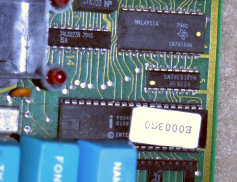 Then I opened the keyboard. That’s where things get even more interesting. All the logic is in the keyboard unit itself. That explains the wiring on the DB-25 keyboard connector and everything else I saw in the main unit. Looking for an MPU of some kind, the only chip I recognized in there is an Intel 8048, which is apparently a common (and now very cheap) microcontroller used in some IBM PC-compatible keyboards. According to a few sites I found, the 8048 was first produced in 1977, dating this unit to that year or later. Cosmetically, I initially dated this unit to 1978-79 in my head, so that matches up pretty well. At about this point in messing with the Incoterm, I had to give up and put it back together. Why? First of all, it was cluttering up my dining room floor, making it hard to walk around. Second, I didn’t want to forget how to put it back together, and third, I have other things to take apart. 🙂
Then I opened the keyboard. That’s where things get even more interesting. All the logic is in the keyboard unit itself. That explains the wiring on the DB-25 keyboard connector and everything else I saw in the main unit. Looking for an MPU of some kind, the only chip I recognized in there is an Intel 8048, which is apparently a common (and now very cheap) microcontroller used in some IBM PC-compatible keyboards. According to a few sites I found, the 8048 was first produced in 1977, dating this unit to that year or later. Cosmetically, I initially dated this unit to 1978-79 in my head, so that matches up pretty well. At about this point in messing with the Incoterm, I had to give up and put it back together. Why? First of all, it was cluttering up my dining room floor, making it hard to walk around. Second, I didn’t want to forget how to put it back together, and third, I have other things to take apart. 🙂
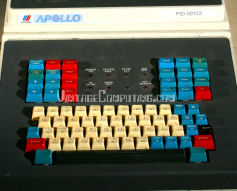 Digging A Little Deeper
Digging A Little Deeper
Right after writing most of this entry, I remembered that there is a sticker on the base unit that has a United Airlines logo and the word “Apollo” on it. I decided to search Google for “United Airlines” and “Apollo” and I found some neat info — not about the hardware, but the Apollo reservation system itself. There’s some computer airline reservation history over at Wikipedia, a United Airlines history page, and airline fan site that says that the Apollo system was set up some time in 1970-71 for UA internal use and made public (to travel agents) around 1976. Then I ran across a cool article from 1996 talking about how the entrenched airline reservation systems like Apollo were on the verge of becoming obsolete thanks to consumers being able to look up flights by themselves on the Internet. Somebody should write a book about how the Internet completely shook up established institutions like that. Well, they probably already have. But as more and more time passes, such books will become less speculative (Wired: “eCrisp: The way you toast bread is about to change forever.”) and more historical (“Through blogs, the Internet put editorial power back into the hands of the average man.“). I like my toast just how it is.
If anyone can contribute any knowledge as to how this terminal works or anything else about this it, please let me know. Until then, it will remain a nice conversation piece.
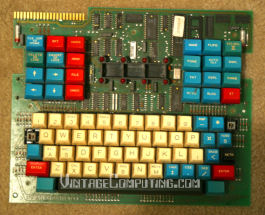
The keyboard unit without the case. Notice the ICs on the top of the board. There are also two unused key switches that are normally covered up by the chassis.
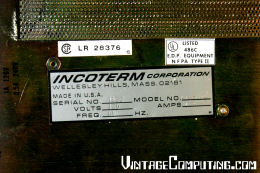
A label on the bottom of the unit that lists info on the terminal.
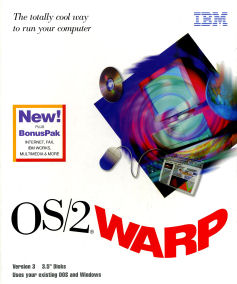







 Ah…the trusty Goodwill store. Once the last bastion for countless old computers thrown out by a thankless middle-class America that had grown tired of them, it’s now merely a graveyard for broken VCRs and 1970s-era crockpots (you can always find at least one crockpot at any Goodwill store). So what happened? Around 2001, if I recall correctly, GCF was choking at the gills with hordes of truly worthless PC-clones that no one ever bought. They kept pouring in, non-stop, stacking up at the back of every store. The only thing
Ah…the trusty Goodwill store. Once the last bastion for countless old computers thrown out by a thankless middle-class America that had grown tired of them, it’s now merely a graveyard for broken VCRs and 1970s-era crockpots (you can always find at least one crockpot at any Goodwill store). So what happened? Around 2001, if I recall correctly, GCF was choking at the gills with hordes of truly worthless PC-clones that no one ever bought. They kept pouring in, non-stop, stacking up at the back of every store. The only thing 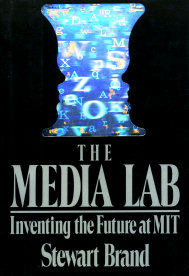 Paperback books cost fifty cents a piece; hard cover books, one dollar. That’s where I found the first edition of “The Media Lab” by Steward Brand (1987), hardcover and in great condition. This is a really cool find — an excellent addition to my computer history library — at a great price. It’s fun to see what was considered futuristic even as recently as 1987. The book has a great picture section in the middle (Grog no like words, Grog like piktures!), which, since I haven’t actually read the book yet, will have to suffice for a source of a description of the book. There are examples of early computer illustration software, rudimentary 3D computer graphics, anti-aliasing for digital text, force-feedback joysticks, holograms, AI, and something called NewsPeek, which was an idea for an electronic newspaper with eerie echos of the World Wide Web before such a thing existed. If it deals with computers and media, the MIT lab did it all first. And, if I may add personally, they also repeatedly failed to capitalize on their discoveries first, a ridiculous flaw of many a government and corporate think-tank and R&D division over the years (Xerox PARC comes to mind). “But RedWolf,” you say, “That’s not the purpose of a research institution!” I don’t care. Many incredible inventions are made at university labs, but it always takes a maverick separatist entrepreneur to break off from the organization and bring the benefits of those inventions to the masses. Otherwise, great ideas would stagnate there forever, and die on the vine where they were grown. Until new technologies are actively pushed and available in the marketplace, they’re just academic play-toys that don’t help anybody, hoarded by elitist engineers. So am I criticizing academic and big organization research? Hell yes. But hey, that opens up another can of worms, and I think it’s time to eat lunch.
Paperback books cost fifty cents a piece; hard cover books, one dollar. That’s where I found the first edition of “The Media Lab” by Steward Brand (1987), hardcover and in great condition. This is a really cool find — an excellent addition to my computer history library — at a great price. It’s fun to see what was considered futuristic even as recently as 1987. The book has a great picture section in the middle (Grog no like words, Grog like piktures!), which, since I haven’t actually read the book yet, will have to suffice for a source of a description of the book. There are examples of early computer illustration software, rudimentary 3D computer graphics, anti-aliasing for digital text, force-feedback joysticks, holograms, AI, and something called NewsPeek, which was an idea for an electronic newspaper with eerie echos of the World Wide Web before such a thing existed. If it deals with computers and media, the MIT lab did it all first. And, if I may add personally, they also repeatedly failed to capitalize on their discoveries first, a ridiculous flaw of many a government and corporate think-tank and R&D division over the years (Xerox PARC comes to mind). “But RedWolf,” you say, “That’s not the purpose of a research institution!” I don’t care. Many incredible inventions are made at university labs, but it always takes a maverick separatist entrepreneur to break off from the organization and bring the benefits of those inventions to the masses. Otherwise, great ideas would stagnate there forever, and die on the vine where they were grown. Until new technologies are actively pushed and available in the marketplace, they’re just academic play-toys that don’t help anybody, hoarded by elitist engineers. So am I criticizing academic and big organization research? Hell yes. But hey, that opens up another can of worms, and I think it’s time to eat lunch.

